Do you have a question about the Brother Network and is the answer not in the manual?
Introduces the manual's scope and the machine's network capabilities.
Details the basic network features of the Brother machine.
Explains network printing services for various operating systems.
Describes how to scan documents over the network.
Sending files as PC Fax over the network.
Scanning and sending documents via a separate fax server.
Lists utilities for managing Brother network devices like BRAdmin Light and Web BRAdmin.
Explains Peer-to-Peer and Network Shared environments.
Details various network protocols supported by the printer.
Guides on setting up the machine for network printing via TCP/IP.
Explains network addressing concepts like IP, subnet mask, and gateway.
Outlines the basic steps for network configuration.
Detailed steps to set the IP address and subnet mask.
Guide for using BRAdmin Light for initial setup.
Instructions for configuring network settings via the control panel.
Mentions alternative methods for network configuration.
Procedures to modify existing print server settings.
Navigating the control panel to access network settings.
Configuration options for TCP/IP settings on the machine.
Controls how the machine obtains an IP address (Auto, Static, etc.).
Steps to manually set the machine's IP address.
Steps to manually set the subnet mask.
Steps to configure the gateway or router address.
Setting the machine's network name (NetBIOS name).
Configuration for WINS server acquisition method.
Setting the IP addresses for primary and secondary WINS servers.
Setting the IP addresses for primary and secondary DNS servers.
Configuration for Automatic Private IP Addressing.
Enables or disables the IPv6 protocol.
Configuration of Ethernet link mode settings.
Settings for email and IFAX functions.
Setting default scan to email parameters.
Setting default scan to FTP parameters.
Setting default scan to network parameters.
Configuration for the Fax to Server feature.
Setting the machine's time zone.
Resets all network settings to factory defaults.
How to print the machine's network configuration details.
Introduction to the Driver Deployment Wizard for automated driver installation.
Explains Peer-to-peer and Network Shared connection types.
Step-by-step guide to install the wizard software.
Instructions on how to use the wizard to deploy drivers.
Process for creating self-running executable files for driver deployment.
Introduces network printing using TCP/IP in a peer-to-peer environment.
Steps to set up a standard TCP/IP port for printing.
Installation steps when the printer driver is not present.
Configuration steps when the printer driver is already installed.
References for further details on IP address configuration.
Explains printing over the internet using IPP protocol.
Instructions for IPP printing on Windows systems.
Details alternative URL entries for IPP printing.
Introduction to configuring Mac OS X for network printing with BR-Script 3.
Steps to select and add the BR-Script 3 driver on Mac.
References for configuring Mac IP addresses.
Introduction to managing the machine via a web browser.
Step-by-step guide to configure settings via web interface.
Details default user and administrator login credentials.
Feature to restrict machine functions using passwords.
Configuring Scan to FTP settings via the web interface.
Configuring Scan to Network settings via the web interface.
Configuring LDAP settings via the web interface.
Introduction to using LDAP for searching information.
How to perform LDAP searches using the machine's control panel.
Introduction to Internet faxing and its capabilities.
Prerequisites and steps to connect for Internet fax.
Explanation of the control panel keys used for fax functions.
Procedures for sending faxes over the internet.
Instructions for typing text, like E-mail addresses, using the dial pad.
How the machine receives and processes emails or internet faxes.
Features for mail notification and status reporting.
Key considerations and limitations for using Internet fax.
Introduction to scanning documents directly to an email address.
Introduction to network security features and protocols.
Definitions of key security-related terms like CA, CSR, Certificate.
Details supported security protocols like SSL/TLS, IPPS, SNMPv3.
Supported security methods for email notifications (POP before SMTP, SMTP-AUTH).
Steps to enable or disable protocols and security methods via web browser.
Guidelines for securely managing the printer using utilities and protocols.
How to use secure SMTP for email notification with authentication.
Process for configuring SSL/TLS by installing certificates.
Steps to create and install a self-signed certificate.
Process for generating a Certificate Signing Request (CSR).
Procedures for importing and exporting certificate files.
Introduction to resolving typical network problems.
Addresses common issues like CD-ROM not starting automatically.
Troubleshooting issues during network print software installation.
Solutions for issues where print jobs are not printed.
Troubleshooting problems with network scanning and PC Fax features.
Resolving issues related to specific network protocols like IPP and TCP/IP.
Explains the services available for printing to the Brother print server.
Advanced methods for configuring IP addresses.
Configuring IP address using DHCP.
Configuring IP address using BOOTP.
Configuring IP address using RARP.
Configuring IP address using APIPA.
Configuring IP address using ARP.
Configuring IP address via TELNET console.
Configuring IP address using Web BRAdmin server software.
Installing drivers using Windows Vista web services.
Installing printer drivers via network print queues or shares.
Technical specifications for the Ethernet wired network print server.
Lists menu options and default factory settings for DCP/MFC models.
Licensing information for embedded software like gSOAP and SNMP.
Legal statements related to the MIT Kerberos license.
Legal statements related to the Cyrus SASL license.
Legal statements related to the OpenSSL license.
Introduces the manual's scope and the machine's network capabilities.
Details the basic network features of the Brother machine.
Explains network printing services for various operating systems.
Describes how to scan documents over the network.
Sending files as PC Fax over the network.
Scanning and sending documents via a separate fax server.
Lists utilities for managing Brother network devices like BRAdmin Light and Web BRAdmin.
Explains Peer-to-Peer and Network Shared environments.
Details various network protocols supported by the printer.
Guides on setting up the machine for network printing via TCP/IP.
Explains network addressing concepts like IP, subnet mask, and gateway.
Outlines the basic steps for network configuration.
Detailed steps to set the IP address and subnet mask.
Guide for using BRAdmin Light for initial setup.
Instructions for configuring network settings via the control panel.
Mentions alternative methods for network configuration.
Procedures to modify existing print server settings.
Navigating the control panel to access network settings.
Configuration options for TCP/IP settings on the machine.
Controls how the machine obtains an IP address (Auto, Static, etc.).
Steps to manually set the machine's IP address.
Steps to manually set the subnet mask.
Steps to configure the gateway or router address.
Setting the machine's network name (NetBIOS name).
Configuration for WINS server acquisition method.
Setting the IP addresses for primary and secondary WINS servers.
Setting the IP addresses for primary and secondary DNS servers.
Configuration for Automatic Private IP Addressing.
Enables or disables the IPv6 protocol.
Configuration of Ethernet link mode settings.
Settings for email and IFAX functions.
Setting default scan to email parameters.
Setting default scan to FTP parameters.
Setting default scan to network parameters.
Configuration for the Fax to Server feature.
Setting the machine's time zone.
Resets all network settings to factory defaults.
How to print the machine's network configuration details.
Introduction to the Driver Deployment Wizard for automated driver installation.
Explains Peer-to-peer and Network Shared connection types.
Step-by-step guide to install the wizard software.
Instructions on how to use the wizard to deploy drivers.
Process for creating self-running executable files for driver deployment.
Introduces network printing using TCP/IP in a peer-to-peer environment.
Steps to set up a standard TCP/IP port for printing.
Installation steps when the printer driver is not present.
Configuration steps when the printer driver is already installed.
References for further details on IP address configuration.
Explains printing over the internet using IPP protocol.
Instructions for IPP printing on Windows systems.
Details alternative URL entries for IPP printing.
Introduction to configuring Mac OS X for network printing with BR-Script 3.
Steps to select and add the BR-Script 3 driver on Mac.
References for configuring Mac IP addresses.
Introduction to managing the machine via a web browser.
Step-by-step guide to configure settings via web interface.
Details default user and administrator login credentials.
Feature to restrict machine functions using passwords.
Configuring Scan to FTP settings via the web interface.
Configuring Scan to Network settings via the web interface.
Configuring LDAP settings via the web interface.
Introduction to using LDAP for searching information.
How to perform LDAP searches using the machine's control panel.
Introduction to Internet faxing and its capabilities.
Prerequisites and steps to connect for Internet fax.
Explanation of the control panel keys used for fax functions.
Procedures for sending faxes over the internet.
Instructions for typing text, like E-mail addresses, using the dial pad.
How the machine receives and processes emails or internet faxes.
Features for mail notification and status reporting.
Key considerations and limitations for using Internet fax.
Introduction to scanning documents directly to an email address.
Introduction to network security features and protocols.
Definitions of key security-related terms like CA, CSR, Certificate.
Details supported security protocols like SSL/TLS, IPPS, SNMPv3.
Supported security methods for email notifications (POP before SMTP, SMTP-AUTH).
Steps to enable or disable protocols and security methods via web browser.
Guidelines for securely managing the printer using utilities and protocols.
How to use secure SMTP for email notification with authentication.
Process for configuring SSL/TLS by installing certificates.
Steps to create and install a self-signed certificate.
Process for generating a Certificate Signing Request (CSR).
Procedures for importing and exporting certificate files.
Introduction to resolving typical network problems.
Addresses common issues like CD-ROM not starting automatically.
Troubleshooting issues during network print software installation.
Solutions for issues where print jobs are not printed.
Troubleshooting problems with network scanning and PC Fax features.
Resolving issues related to specific network protocols like IPP and TCP/IP.
Explains the services available for printing to the Brother print server.
Advanced methods for configuring IP addresses.
Configuring IP address using DHCP.
Configuring IP address using BOOTP.
Configuring IP address using RARP.
Configuring IP address using APIPA.
Configuring IP address using ARP.
Configuring IP address via TELNET console.
Configuring IP address using Web BRAdmin server software.
Installing drivers using Windows Vista web services.
Installing printer drivers via network print queues or shares.
Technical specifications for the Ethernet wired network print server.
Lists menu options and default factory settings for DCP/MFC models.
Licensing information for embedded software like gSOAP and SNMP.
Legal statements related to the MIT Kerberos license.
Legal statements related to the Cyrus SASL license.
Legal statements related to the OpenSSL license.
| Connectivity Technology | Wired |
|---|---|
| Data Link Protocol | Ethernet, Fast Ethernet |
| Compliant Standards | IEEE 802.3, IEEE 802.3u |
| Ports Qty | 1 |
| Interface | Ethernet 10Base-T/100Base-TX |
| Network / Transport Protocol | TCP/IP |
| Operating Systems Supported | Linux |
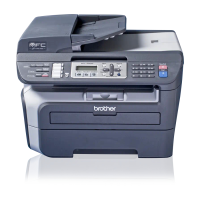


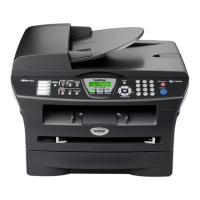

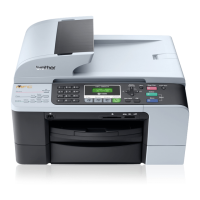
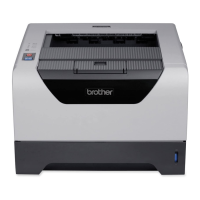
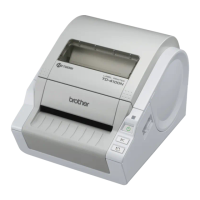

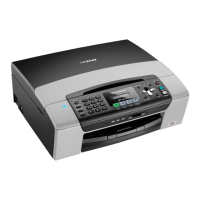
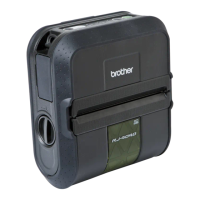

